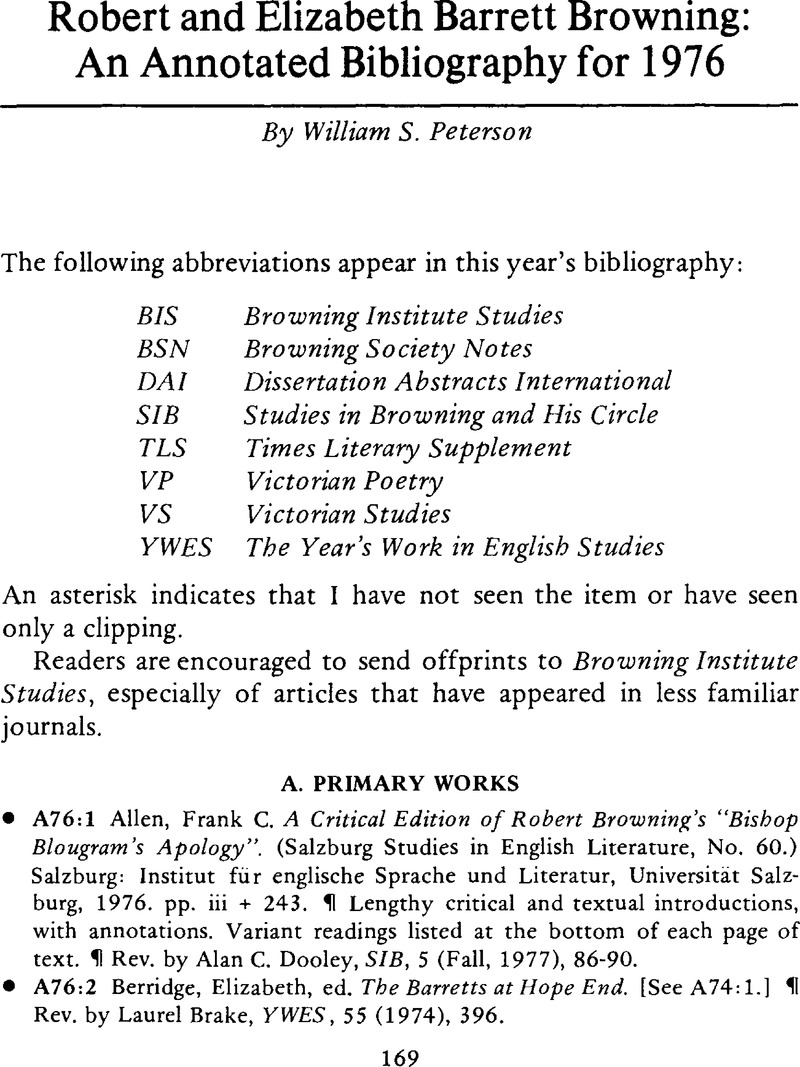• C76:103Rivers, Charles L.Robert Browning's Theory of the Poet, 1833–1941. (Salzburg Studies in English Literature, No. 58.)
Salzburg:
Institut für englische Sprache und Literatur, Universität Salzburg,
1976. pp.
186. ¶ “In his early poetry… Browning evolved, I believe, a theory of the poet, a theory based on the idea of equilibrium between subjective and objective tendencies in personality, a theory correlated with and forming a synthesis of his ideas on philosophy, religion, and psychology. In this study I shall be concerned primarily with showing how Browning progressively clarified his ideas on the function of the poet… in
Pauline, Paracelsus, Sordello, and
Pippa Passes” (p. 1).
Essay on Shelley is also discussed. (A reprint of C61:46, C64:43, C65:46, C70:56, and C73:109.)
Google Scholar 